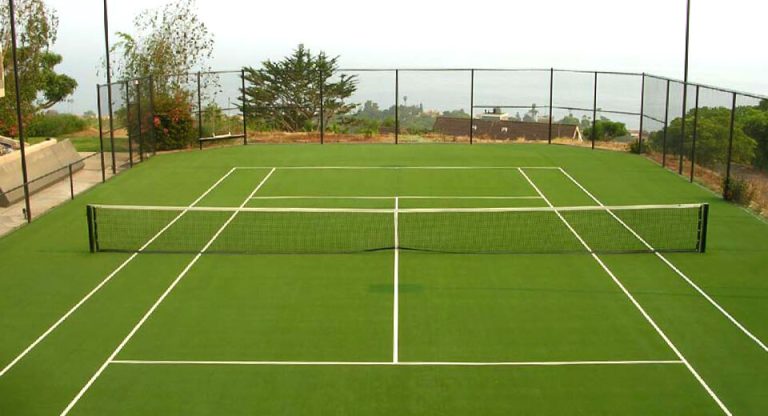Πώς κατασκευάζονται οι μπάλες τένις; Μια ματιά πίσω από τις σκηνές

Μπάλες του τένις Η μπάλα του τένις είναι ένα μικροσκοπικό αλλά ζωτικής σημασίας συστατικό του παιχνιδιού τένις, το οποίο παίζεται από εκατομμύρια ανθρώπους σε όλο τον κόσμο. Οι μηχανικοί έκαναν τα μαγικά τους για να κάνουν αυτές τις φαινομενικά συνηθισμένες σφαίρες αρκετά ανθεκτικές ώστε να αντέχουν χτυπήματα υψηλής ταχύτητας διατηρώντας παράλληλα ένα σταθερό επίπεδο παιχνιδιού στο γήπεδο. Αυτή η εις βάθος ματιά στη διαδικασία κατασκευής των μπαλών του τένις θα σας οδηγήσει από την αρχή, με τις πρώτες ύλες, μέχρι το τελικό προϊόν.
Τα βασικά συστατικά: Τι κάνει μια μπάλα του τένις
Τα υλικά που χρησιμοποιούνται για την κατασκευή μιας μπάλας του τένις είναι το πρώτο βήμα στο ταξίδι τους. Η απόδοση της μπάλας επηρεάζεται σε μεγάλο βαθμό από τα κύρια συστατικά της, τα οποία είναι η τσόχα και το καουτσούκ. Το κέντρο της μπάλας είναι κατασκευασμένο από φυσικό καουτσούκ, το οποίο συχνά προέρχεται από τροπικά δέντρα καουτσούκ. Για να αποκτήσετε την ευελιξία και την ανθεκτικότητα που θέλετε από αυτό το καουτσούκ, το συνδυάζετε με συνθετικό καουτσούκ και μια σειρά από χημικά.
Tennis balls usually have an exterior covering called felt that is a combination of wool and nylon. While the nylon makes it strong and resilient, the wool makes it soft and long-lasting. The felt’s quality is critical because it determines how the ball feels, how it spins, and how high it bounces. The ball’s steady performance throughout its lifecycle is guaranteed by high-quality felt.
Accurately Moulding the Rubber Core
The production process begins with the preparation of raw materials, and the first critical stage is the creation of the rubber core. Precision molding is used for this, which entails heating the rubber mixture and shaping it into a sphere. Molds are used to bring the rubber under high pressure and heat so that it can vulcanize, a chemical process that makes it stronger and more pliable.
The density and consistency of the rubber core are closely monitored throughout vulcanization to make sure it gets there. Because core discrepancies might cause inconsistent court performance, this stage is crucial. Before going on to the next step, the cores are cooled and checked for flaws.
Shape and Cut the Felt for the Outside Layer
In another section of the plant, felt is being worked while the rubber cores are being prepared. The felt is cut into half-spheres after being stretched from large rolls. As they gradually cover the rubber core, these felt pieces will give the ball its unique appearance and texture.
Because every part has to be precisely shaped to fit around the rubber core, the shaping and cutting process is quite accurate. Felt is precisely and efficiently cut using automated machinery with little waste. Because uneven coverage and compromised ball performance might result from badly cut felt, the cutting procedure must be of the highest quality.
Using Adhesive: Making Sure the Bond Is Strong
The following stage, after preparing the rubber cores and felt pieces, is to attach them together. The rubber and felt are bonded together using a specific adhesive, usually one based on latex, which allows for a strong but flexible connection. Ensure that the rubber core and felt pieces are evenly coated with glue to avoid any potential gaps or weak regions.
Consistency and accuracy are key while applying adhesive. The glue is often applied uniformly by automated machinery, making sure that each ball gets the same amount of glue. After the adhesive has dried, the felt pieces are meticulously positioned around the rubber core, ensuring a secure fit that will withstand rough play.
Bond Finalization via Heat and Pressure
To complete the binding between the felt pieces and the rubber core, the balls are heated and compressed. Curing is the process of bringing the balls to a certain temperature by subjecting them to a pressured chamber. Because the glue is heated, it may pass through the felt and form a strong bind with the rubber.
Because the curing process establishes the bond’s strength and longevity, it is an essential step in production. For proper adhesive setting, precise regulation of temperature and pressure is required. After the curing process is finished, the balls are given time to cool down before going on to the last steps of manufacturing.
Refining the Sphere by Trimming and Shaping
Once the rubber and felt have been securely bonded, the balls can be trimmed and sculpted to their desired shape. In order to achieve a completely spherical ball, it is necessary to cut away any extra felt. To make sure every ball is perfect, automated equipment trim the felt in a uniform and exacting fashion.
Achieving consistent performance is heavily dependent on the shaping process. The ball’s bounce and flight properties are affected by any shape abnormalities. Manufacturers use state-of-the-art trimming and shaping technology to create tennis balls with consistent sizes and shapes, ensuring that players can rely on them for reliable performance on the court.
Quality Control: Maintaining Uniformity
The production of tennis balls relies heavily on quality control. To make sure the balls are up to par, they undergo a battery of testing at various points in the manufacturing process. In doing so, you must ensure that the balls are of sufficient size, weight, bounce, and durability. Any balls that don’t match these specifications are either reconditioned or thrown out.
The performance qualities of the balls are measured using advanced testing equipment. One common method is to drop the balls from a certain height and then measure how far they bounce back. The balls are put through a battery of impact tests designed to mimic game conditions in order to determine their durability. Manufacturers may guarantee consistent and dependable tennis balls with every batch by performing rigorous quality control.
The Last Touches in Printing and Packaging
The balls are prepared for the finishing touches once they have passed all quality control tests. This entails imprinting the balls with the brand’s logo and any additional markings. The logos are applied precisely and permanently using special printing tools. The printing ink is durable enough to last the ball’s normal use, so the markings will stay legible for as long as the ball does.
Distribution of the balls after printing. Putting the balls in a pressurized container is a common method for keeping them bouncy and fresh. Because the cans are airtight, the balls will keep performing at their best right up until you need them.
Sustainability in the Environment: Factors to Think About
Οι βιώσιμες πρακτικές στην παραγωγή μπάλας του τένις έχουν λάβει μεγαλύτερη προσοχή τα τελευταία χρόνια. Σε μια προσπάθεια να μειώσουν τις αρνητικές επιπτώσεις τους στο περιβάλλον, οι κατασκευαστές αναζητούν εναλλακτικές λύσεις στις συμβατικές μεθόδους παραγωγής, όπως η χρήση ανανεώσιμων πηγών ενέργειας και πιο αποδοτικών υλικών. Ορισμένες επιχειρήσεις δοκιμάζουν πιο φιλικές προς το περιβάλλον κόλλες από νερό, για παράδειγμα, ή από ανακυκλωμένο καουτσούκ και τσόχα.
Η μείωση των σκουπιδιών και η βελτίωση της ανακύκλωσης είναι άλλες προτεραιότητες. Αυτό περιλαμβάνει την ανακάλυψη νέων χρήσεων για παλιές μπάλες του τένις, πυρήνες από καουτσούκ και υπολείμματα τσόχας. Η παραγωγή μπάλες του τένις έχει σημαντικό αντίκτυπο στο περιβάλλον, αλλά με τις σωστές βιώσιμες μεθόδους, η βιομηχανία μπορεί να μειώσει αυτόν τον αντίκτυπο και να εξασφαλίσει τη συνεχή βιωσιμότητα του αθλήματος.
Νέες εξελίξεις και εξελισσόμενα στυλ: Η ιστορία των μπάλων του τένις
Οι νέες τεχνολογίες και ιδέες εισχωρούν πάντα στη βιομηχανία παραγωγής σφαιρών του τένις, με στόχο τη βελτίωση της απόδοσης και της βιωσιμότητας. Ορισμένες επιχειρήσεις, για παράδειγμα, εργάζονται σε υλικά αιχμής που βελτιώνουν τόσο την ικανότητα αναπαραγωγής όσο και την ανθεκτικότητα. Από την άλλη πλευρά, κάποιοι εξετάζουν πώς η αυτοματοποίηση και η τεχνητή νοημοσύνη μπορούν να βελτιώσουν την παραγωγή.
Η χρήση έξυπνων τεχνολογιών στις μπάλες του τένις είναι μια πολλά υποσχόμενη νέα τάση. Αυτές οι «έξυπνες μπάλες» έχουν ενσωματωμένους αισθητήρες, ώστε να μπορούν να παρακολουθούν πράγματα όπως η ταχύτητα, η τροχιά και η περιστροφή. Οι προπονητές και οι παίκτες μπορούν να χρησιμοποιήσουν αυτές τις πληροφορίες για να τελειοποιήσουν το παιχνίδι τους. Μπορεί να αναμένουμε την κυκλοφορία ακόμη περισσότερων κορυφαίων μπαλών τένις τα επόμενα χρόνια, καθώς η τεχνολογία συνεχίζει να προοδεύει.
Τέλος, μια ματιά στην επιστήμη και την τέχνη της κατασκευής μπάλων του τένις
Η διαδικασία δημιουργίας μιας μπάλας του τένις είναι ένας συναρπαστικός συνδυασμός τέχνης και επιστήμης που απαιτεί ακριβή μηχανική, κορυφαία υλικά και αυστηρά μέτρα διασφάλισης ποιότητας. Κάθε στάδιο της κατασκευής, από την επιλογή των σωστών πρώτων υλών έως την προσθήκη των τελευταίων πινελιών, όπως η εκτύπωση και η συσκευασία, είναι απαραίτητο για τη δημιουργία μιας μπάλας που αποδίδει με συνέπεια και αξιοπιστία στο γήπεδο.
Όπως είδαμε, υπάρχουν πολλά κινούμενα μέρη στο ταξίδι μιας μπάλας του τένις και το καθένα απαιτεί ακρίβεια και αφοσίωση στην τελειότητα. Κάθε φορά που παίζετε ένα παιχνίδι τένις, είτε μόλις ξεκινάτε είτε είστε επαγγελματίας, αφιερώστε λίγα δευτερόλεπτα για να θαυμάσετε την ικανότητα και την καινοτομία που συνέβαλαν στην κατασκευή της μπάλας.









